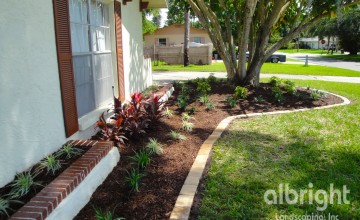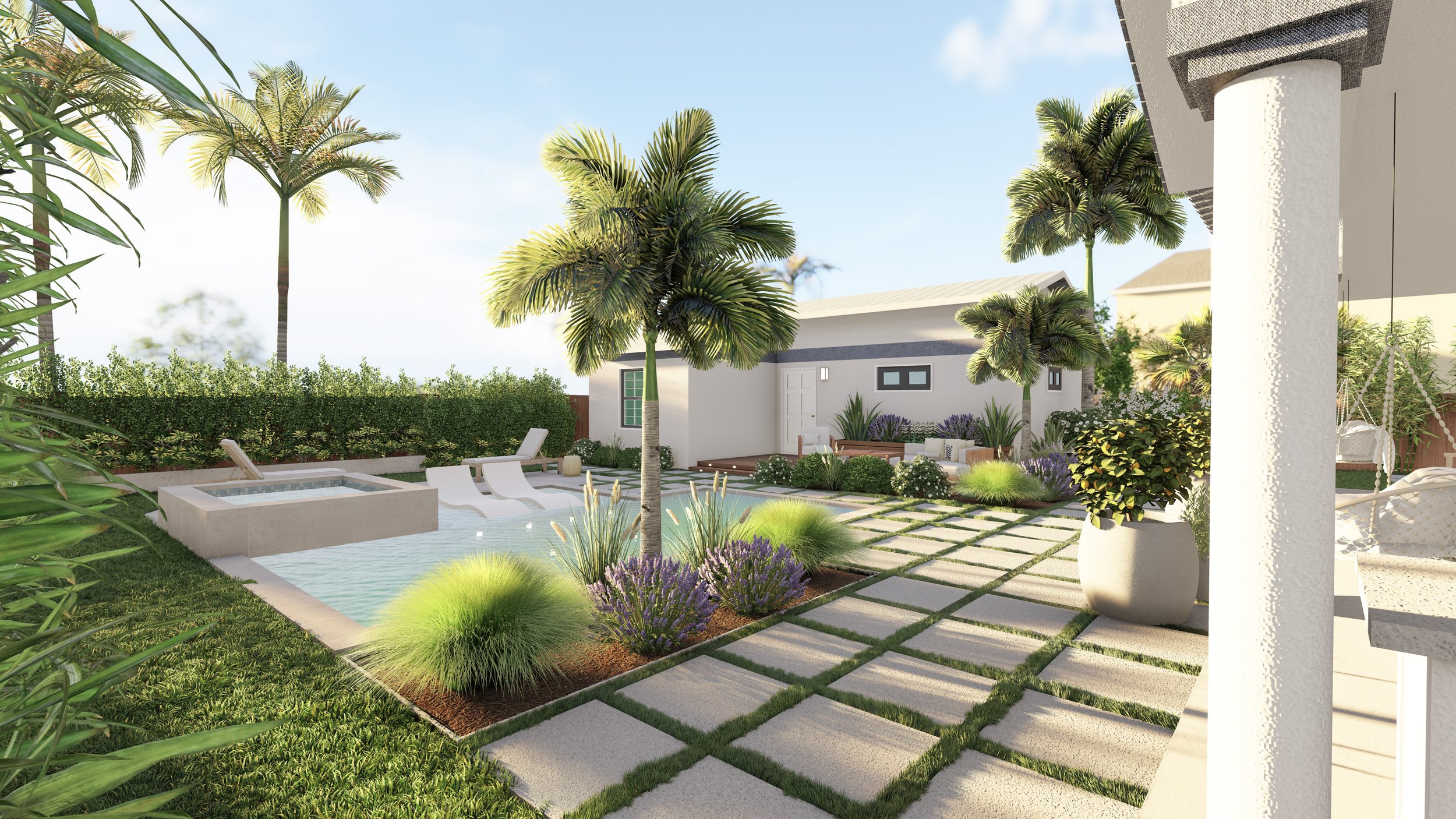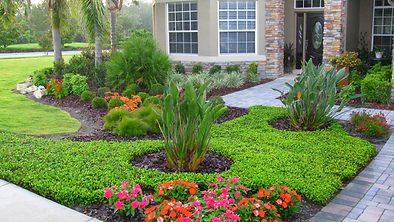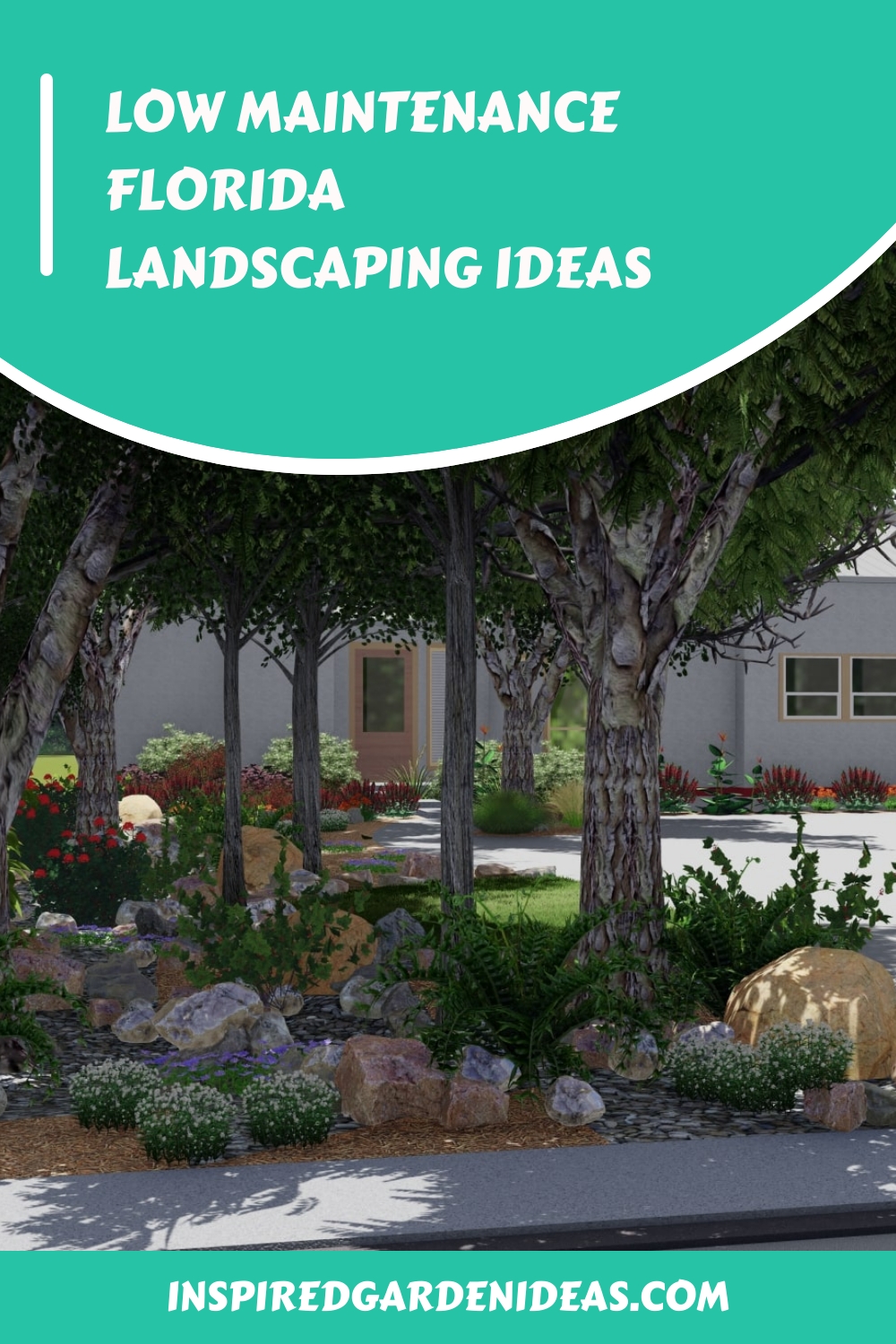Maintaining a beautiful and functional landscape in Florida can be a challenge, especially with the hot and humid climate. However, with the right planning and design, it is possible to have a low maintenance landscape that thrives in the Florida weather. In this article, we will explore five low maintenance Florida landscaping ideas that will not only save you time and effort but also enhance the beauty of your outdoor space.
Native Plants for a Drought-Resistant Landscape

With its sandy soil and frequent droughts, Florida is known for its challenging growing conditions. One way to reduce the maintenance of your landscape is by choosing native plants that are adapted to these conditions. Native plants require less water, fertilizer, and pest control, making them an excellent choice for a low maintenance landscape.
Choosing the Right Native Plants
When selecting native plants for your Florida landscape, consider the specific microclimate of your yard. Factors such as sun exposure, soil type, and water availability can vary greatly within a small area, so it’s essential to choose plants that will thrive in your specific conditions. Some popular native plants for a low maintenance landscape in Florida include:
- Palmetto Palm: This slow-growing palm is a staple in Florida landscapes. It is drought-resistant and requires little to no maintenance once established.
- Gulf Muhly Grass: This ornamental grass is perfect for adding texture and color to your landscape. It is drought-tolerant and low maintenance, requiring minimal watering and pruning.
- Silver Buttonwood: This hardy shrub is ideal for creating a natural hedge or barrier in your landscape. It is drought-resistant and tolerant of salt spray, making it a great option for coastal areas.
- Beautyberry: This shrub produces clusters of bright purple berries in the fall, adding a pop of color to your landscape. It is drought-tolerant and low maintenance, requiring little to no pruning.
- Saw Palmetto: This plant is known for its medicinal properties, but it also makes an excellent addition to a low maintenance landscape. It is drought-resistant and requires minimal pruning.
Incorporate Hardscaping for a Low Maintenance Design

Hardscaping refers to the non-living elements in your landscape, such as rocks, pavers, and statues. By incorporating hardscaping into your design, you can reduce the amount of lawn and plant beds that require regular maintenance. Plus, hardscaping adds texture and visual interest to your landscape, making it more visually appealing.
Types of Hardscaping Elements
When it comes to hardscaping, the possibilities are endless. Here are a few ideas to incorporate into your low maintenance Florida landscape:
- Pavers: Pavers come in various shapes, sizes, and colors, making them a versatile option for your landscape. They can be used to create walkways, patios, and even driveways, reducing the amount of lawn that needs to be maintained.
- Rock Gardens: Rock gardens are not only aesthetically pleasing, but they also require minimal maintenance. You can use different types of rocks and stones to create a unique and low maintenance feature in your landscape.
- Water Features: Adding a water feature, such as a fountain or pond, can enhance the look and feel of your landscape. These features require minimal maintenance and can help attract wildlife to your yard.
- Statues and Sculptures: Incorporating statues and sculptures into your landscape can add a touch of art and personality to your outdoor space. They require no maintenance and can make a statement in your landscape.
- Outdoor Seating Area: Including an outdoor seating area in your landscape not only provides a place to relax and enjoy your yard, but it also reduces the amount of lawn that needs to be maintained.
Xeriscaping for a Low Water Landscape

Xeriscaping is a landscaping technique that uses drought-resistant plants and design principles to create a low water landscape. This approach not only reduces the amount of water required to maintain your yard but also saves you money on your water bill. Plus, xeriscaping can add texture and visual interest to your landscape.
Design Principles of Xeriscaping
When designing a xeriscape, there are seven principles to keep in mind:
- Planning and Design: Proper planning and design are crucial to the success of a xeriscape. Consider the sun exposure, soil type, and water availability in your yard when deciding on the layout and plant selection.
- Soil Improvement: Amending the soil with organic matter can improve its ability to retain water and nutrients, reducing the need for frequent watering.
- Appropriate Plant Selection: Choose plants that are adapted to the Florida climate and require minimal water and maintenance.
- Efficient Irrigation: Use drip irrigation or soaker hoses to deliver water directly to the roots of your plants, minimizing water waste.
- Mulching: Adding a layer of mulch around your plants helps retain moisture in the soil, reducing the need for frequent watering.
- Maintenance: Regularly maintaining your xeriscape, such as removing weeds and pruning plants, can help ensure its long-term success.
- Appropriate Turf Areas: If you want to incorporate turf into your xeriscape, consider using drought-resistant grasses, such as Bermuda or Zoysia, and limit the size of the lawn to reduce water usage.
Implementing Container Gardens for Easy Maintenance

Container gardening is an excellent option for those looking for a low maintenance landscape in Florida. It allows you to grow plants in pots and containers, making it easier to control the soil, water, and nutrients for each plant. This means you can choose plants with similar care requirements and group them together, reducing the time and effort required to maintain them.
Tips for Creating a Container Garden
Here are a few tips for creating a successful and low maintenance container garden in Florida:
- Choose the Right Container: Make sure your containers have adequate drainage holes to prevent waterlogging and use pots that are large enough for the plants to grow.
- Select Drought-Resistant Plants: Choose plants that require minimal watering and are adapted to the Florida climate, such as succulents, cacti, and tropicals.
- Use High-Quality Potting Mix: The right potting mix is essential for container gardening, as it provides the necessary nutrients and moisture for your plants to thrive.
- Water Regularly: Since containers tend to dry out faster than traditional garden beds, it’s essential to water them regularly, especially during hot and dry periods.
- Fertilize as Needed: Container plants may need more frequent fertilization than plants grown in the ground. Use a slow-release fertilizer to provide nutrients throughout the growing season.
- Group Plants with Similar Care Requirements: Grouping plants with similar light and water needs in the same container can help reduce maintenance and ensure the plants thrive.
Incorporating Low Maintenance Edible Gardens

Why not save time and money by growing your fruits and vegetables in your low maintenance Florida landscape? By incorporating edible gardens into your landscape design, you can enjoy fresh produce while reducing the time and effort required to maintain your yard.
Tips for Growing a Low Maintenance Edible Garden
Here are some tips to keep in mind when creating a low maintenance edible garden:
- Choose Easy-to-Grow Crops: Select vegetables and herbs that are adapted to the Florida climate and require minimal maintenance, such as tomatoes, peppers, and basil.
- Start Small: Start with a few plants and expand as you gain experience and confidence in your gardening skills.
- Use Raised Beds: Raised beds can help reduce weeds, pests, and diseases while also providing good drainage for your plants.
- Amend the Soil: Adding compost or organic matter to your soil can improve its nutrient content and water retention, reducing the need for frequent watering and fertilizing.
- Mulch, Mulch, Mulch: Apply a layer of mulch around your plants to retain moisture, suppress weeds, and provide nutrients to the soil.
- Practice Crop Rotation: Rotating your crops each season can help prevent nutrient depletion and pest infestations.
FAQs
What are some low maintenance options for a Florida landscape?
Some low maintenance options for a Florida landscape include using native plants, incorporating hardscaping elements, xeriscaping, container gardening, and edible gardens.
How do I choose the right native plants for my Florida landscape?
Consider your yard’s specific microclimate, such as sun exposure, soil type, and water availability, when choosing native plants for your Florida landscape.
Can I incorporate turf into a xeriscape?
Yes, you can incorporate turf into a xeriscape by using drought-resistant grasses and limiting the size of the lawn.
How often should I water my container garden in Florida?
Containers tend to dry out faster than traditional garden beds, so it’s essential to water them regularly, especially during hot and dry periods.
What are some easy-to-grow crops for a low maintenance edible garden in Florida?
Some easy-to-grow crops for a low maintenance edible garden in Florida include tomatoes, peppers, and herbs like basil and rosemary.
Conclusion
Creating a low maintenance landscape in Florida is all about choosing the right plants and design elements that can thrive in its challenging growing conditions. By incorporating native plants, hardscaping, xeriscaping, container gardening, and edible gardens, you can reduce the time and effort required to maintain your outdoor space while still enjoying a beautiful and functional landscape. Remember to plan and design carefully, choose low maintenance options, and practice proper maintenance to ensure the long-term success of your low maintenance Florida landscape.


